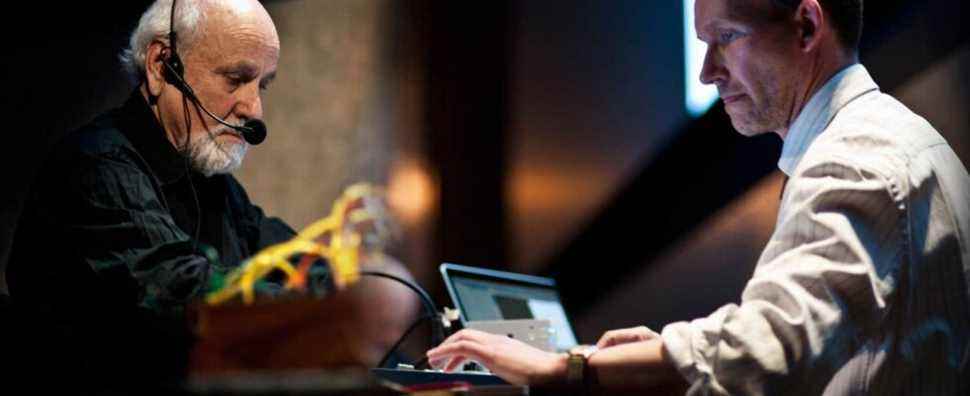“I’ve never given a performance in Montreal, I don’t even remember going there,” admits Morton Subotnick who, soon to be 89, will prove throughout the hour he gave to the Homework have an excellent memory. At the invitation of the Interdisciplinary Center for Research in Music, Media and Technology (CIRMMT) and the MUTEK and AKOUSMA festivals, the composer, professor and pioneer of electronic music will present on March 23 As I Live and Breathehis final stage performance, described by the caption as “a musical metaphor for my life in music”, an audiovisual work put into images by his collaborator Lillevan.
Attached to his country house in the State of New York where he settled after having lived in San Francisco, then in Greenwich Village, Morton Subotnick filled us with his knowledge by jumping from one subject to another without ever lose track of your thoughts. Through him flows the story of one of the most important musical revolutions of the last century: the invention and then the democratization of electronic music and the instruments that make it possible. His background gives him a particularly fine perspective on musical creation, a perspective he shares with his students — and tomorrow with the Montreal public, during a free lecture presented at the Elizabeth Wirth Music Pavilion at McGill University.
If you attend, ask him what he thinks of artificial intelligence, it will go up in a quarter turn: “Artificial intelligence will be based on what engineers want to create, explains Subotnick. It reminds me of that appalling application that was presented as artificial intelligence: the software could create all possible melodies. Granted, but that was forgetting that music is not just a melody, it’s also the way to interpret it. It’s all in the way of presenting the music, because the real creation is the meaning, the meaning that we give to the music. There is nothing intelligent in this artificial intelligence! » slices the master.
Two details of his journey ensure a place in history for the American composer who participated in the creation of the California Institute of the Arts (CalArts) after founding, with his friends Ramon Sender and Pauline Oliveros, the San Francisco Tape Music Center in 1962. The first detail: he closely collaborated in the invention of one of the first (modular) synthesizers, the Buchla 100 Series, in 1965. The second: with this instrument, he recorded the first original work of electronic music designed to be listened to on disc, the amazing Silver Apples of the Moon released by the Nonesuch label in the summer of 1967.
“Fortunately, this record came out before Switched-On Bach [1968], otherwise the public would have had a completely different idea of what electronic music is! he says, speaking of the work of Wendy Carlos, who replayed famous classic tunes on the Moog synthesizer. Fifty-five years later, Silver Apples of the Moon never ceases to amaze us. On side A, a study in the pitch and timbre of electronic sounds evoking something like strange and delicate birdsong; on side B, a study of rhythm, so urgent and modern that it could have been composed yesterday.
“I was basically a composer, who wrote music for instrumentalists”, having been trained on the clarinet. “However, what I understood very quickly in the early 1960s was that the world was changing, that technology was advancing and that technology in music was going to become something incredible”, says Morton Subotnick, who imagined already the world of musical possibilities that was emerging at the time. Musical instruments had yet to be invented, “but when you start programming software or creating electronic instruments, you also invent a new vocabulary for musical creation. And who should do that? I wondered. Engineers ? But no: imagine if engineers had invented language, poetry wouldn’t exist! »
Morton Subotnick has never stopped composing, even if he has turned away from recording albums since the 1980s, preferring today contact with the public. “I still use the Buchla to create my sounds, but they are sampled in the computer,” he explains. I also recorded my voice, which allows me to sing a duet with myself. Ever since I started getting back on stage, I’ve been trying to express what it means to perform. It is therefore a single and long live creation, which I named As I Live and Breathe. »
Morton Subotnick & Lillevan, with Louis Dufort and Ana Dall’Ara-Majek, will be performing on March 23 at CIRMMT, 527 Sherbrooke Street West.
